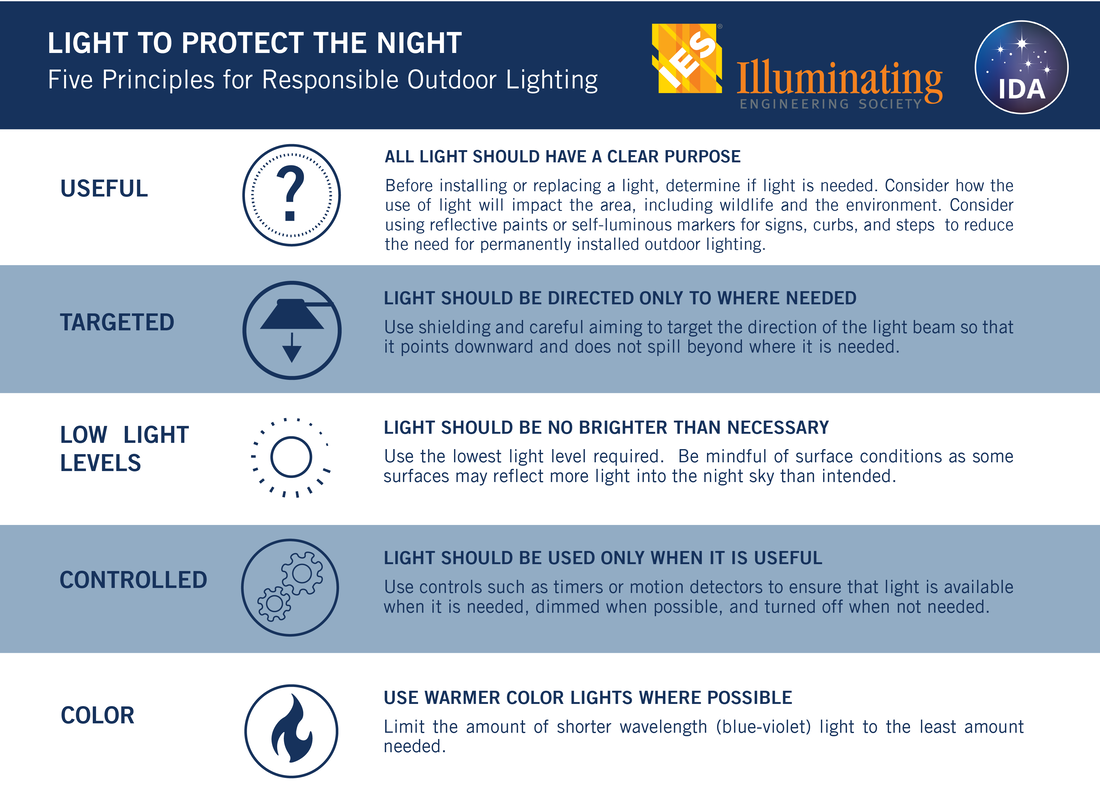Archives
June 2024
Categories
All
|
Back to Blog
Image credit: Daniel Mennerich 1182 words / 5-minute read Summary: Most efforts to reduce light pollution to date have focused on the public sector. But as night skies continue to brighten around the world, private enterprise can play in protecting dark night skies. Corporate social responsibility (CSR) and environment, social, and governance (ESG) principles may be powerful — and thus far unappreciated — levers on the problem. A recent paper in the journal Science made a splash in the world media. Headlines included "It's Getting Harder and Harder to See the Stars", "Starry Nights Are Disappearing", and "As 'skyglow' grows, study documents glaring global light pollution". The paper contained a startling result: in some parts of the world, the brightness of the night sky doubles every eight years. It represented a big increase compared to the rate of change reported as recently as 2017. Light pollution is a problem in many parts of our world, its harms now thoroughly documented. Available technical solutions are cost effective, but the social and political will to put them into practice are missing. Laws and regulations can help, but they only go so far given that they are often not enforced well. After governments, private enterprises are some of the most prolific light polluters in many communities. At the same time, those enterprises are finding that their environmental bona fides are increasingly scrutinized. Can the concepts of corporate social responsibility (CSR) and environment, social, and governance (ESG) nudge some companies toward doing better? Beyond the buzzwords: what are CSR and ESG?CSR and ESG are hot topics in the global corporate world. But what do they really mean? CSR establishes values and sets an agenda, while ESG turns that agenda into goals with measurable impact. In a sense, CSR makes up the "S" ("social") in ESG by operationalizing the vision that CSR establishes. The actions of early 20th century industrialists like John D. Rockefeller and Andrew Carnegie exemplify CSR. They spent billions of dollars on social causes, the legacy of which remains with us to this day. ESG traces its roots to the South African anti-apartheid movement that began in the late 1950s. It only became well known in 2006 when the United Nations launched the "Principles for Responsible Investment." CSR is qualitative due to the many nuances of measuring social impact. ESG criteria tend to consist of quantitative metrics. It provides a way for companies, investors and the public to check how well companies stick to the sustainability and corporate responsibility goals they set. The current understanding of ESG considers the environment a stakeholder in all businesses. No particular industry or sector is exempt. This framework is not immune to criticism. A major disadvantage of CSR and ESG is that small businesses shoulder much of its costs. Some critics contend that they undermine the primary aim of business, which is to create (financial) value for shareholders. They can also draw unwanted scrutiny over ever aspect of a company's business. And in some cases, CSR/ESG initiatives can distract from the need for meaningful, systemic change. Why companies careThe corporate world now ignores CSR and ESG at its own peril. Corporate boards increasingly seek advice on how to pursue these ideas. Some now see environmental concerns as among the stakeholders that their business affects. But much of the pressure to do so still comes from the outside. One recent survey found that almost three-fourths institutional investors do not trust companies to achieve their stated sustainability and ESG goals. Investors and regulators alike are applying pressure on companies. And it's becoming hard for them to hide the environmental and social harms associated with their activities. What about forces operating inside organizations? There is some evidence that companies prioritizing CSR and ESG principles have increased employee productivity and reduced turnover. Other data suggest that consumers, especially younger people, prefer to buy from companies that exhibit a strong sense of social responsibility. Failing to recognize this can even cost companies more in the long run. How CSR and ESG may influence light pollutionLight pollution is an environmental issue at its core. It involves many known and suspected hazards to plants, animals and even people. With each passing year, the weight of the evidence grows bigger. And because the world still produces some 80 percent of its electricity from fossil fuel sources, light pollution is also a climate issue. Light pollution arguably harms businesses' environmental stakeholders, yet it costs little to nothing to undo the damage. Many businesses will find it even saves them money to reduce their artificial light at night emissions in both their supply chains and at their facilities. Companies that fail to take advantage of these savings may be seen — pardon the pun — in a bad light. It may lead to accusations that they only care about higher-profile environmental issues. In turn, that implies that their assessments of environmental stakeholder needs are inadequate. Wherever companies operate, they extract profits from those territories and communities. As the social significance of climate change rises, it is a disadvantage when the public perceives a company is doing harm rather than good. Those that do considerable business with governments may find these concerns turn into requirements. Planning ahead to be able to react quickly to a changing business landscape conveys a clear advantage. There is even a nexus among ESG, land use planning, the public regulatory regime, and dark skies. In countries like Wales and New Zealand, large territories are under management as International Dark Sky Reserves. Both the central governments and local councils in those places are proactive in framing light pollution as an environmental concern. From theory to actionWhat can companies do? They should put their own houses in order first. Audits of lighting practices and policies can reveal opportunities to reduce waste and lower light emissions. For instance, a retailer with large distribution centers might find that over-lighting of facilities threatens worker safety. A review of their business models may show elements that generate significant light pollution. Changes can reduce their impact without undermining those models and the profits they drive. Companies that leverage the low cost of making these improvements will find that they can't afford not to do it. One simple blueprint for developing CSR and ESG goals is to ensure corporate actions adhere to the Five Principles for Responsible Outdoor Lighting. This series of statements prioritizes protection of the nighttime environment by prescribing simple lighting concepts. It also suggests metrics that companies can use to chart their progress. What holds back progress in this arena? As with much of the wider world of dark-sky advocacy, the main missing piece of the puzzle is awareness. Corporate boards that become aware of the harms of light pollution are more likely to develop policies that commit to its reduction. Investors and consumers can be important influences that raise awareness. Solutions may be as much bottom-up as top-down. As the world becomes more socialized to the related challenges of climate change and sustainability, so it may be more likely to discover light pollution. Companies can either recognize this and act on it or risk exposure as a major source of the problem. Those that choose action will find the relevant technology advanced, the solutions plentiful, and the value proposition powerful. Every company can benefit from a review of its policies and practices relating to outdoor lighting. Contact us today to learn how we can help your business understand its light pollution impact. Thanks to Lee Mauger for helpful discussions as this post was coming together.
0 Comments
Read More
|
 RSS Feed
RSS Feed


